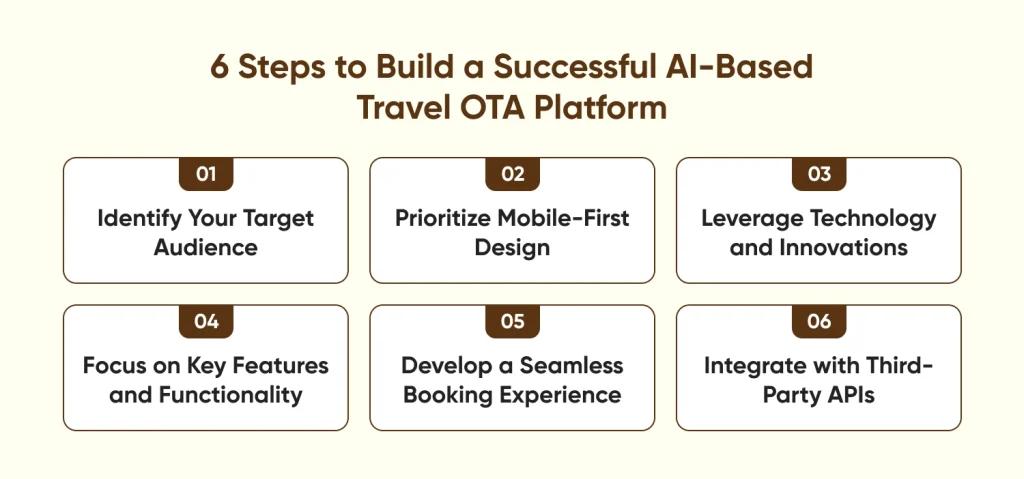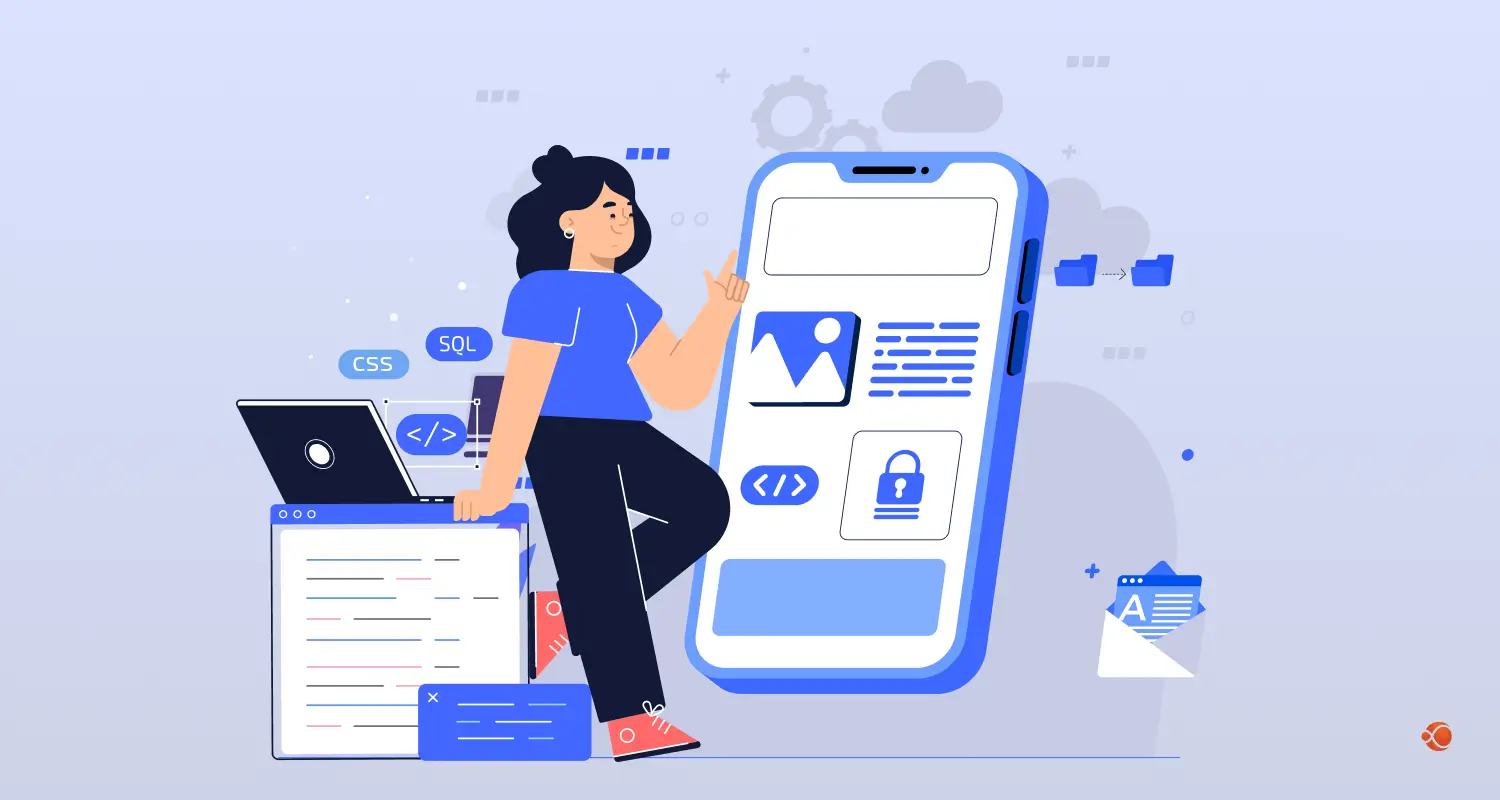Imagine going in person to the ticket office to book a flight ticket or using a printed map to search your hotel. People nowadays are actively connected to the Internet and it’s almost impossible for them to plan a trip without using technology as we can do everything using our smartphones. So, keeping this in mind, creating an OTA platform is a rewarding endeavor as it considers the rapid growth of the travel industry.
With this, travelers can compare, search, and book various travel services, such as flights, hotels, car rentals, and excursions, via an OTA platform without visiting any office, which acts as a one-stop travel app development solution. Building a strong, user-friendly online travel agency can yield commercial potential, given the increasing demand for digital travel experiences.
Collaborating with a travel app development company can further enhance this process, ensuring the platform is efficient and appealing. However, developing an OTA involves an in-depth understanding of the market, technical infrastructure, and user experience to achieve both efficiency and scalability.
Apart from this, integrating AI in the travel industry can streamline operations and improve personalization which adds an innovative edge to your platform. This extensive guide will help you lay the foundation for a competitive and user-centric OTA platform if you intend to start your own travel agency or an industry professional seeking to enhance an existing platform.
Some Interesting Travel Facts and Figures
- Over the last five years, travel apps’ global revenue has tripled in size, exceeding 1.2 billion U.S. dollars in 2023.
- In the year 2023, over 800 million people are estimated to use travel apps for their travel which quite evidently is going to increase further over time. In that year, the travel app generated revenues of well over $600 billion which is a 13% increase from last year.
- In the last 5 years, the travel app head revenue over the whole globe tripled in size surpassing 1.2 billion dollars in revenue in 2023.
- 58% of mobile travel apps are used at least monthly.
Here are the stats showcasing the revenue of the travel app market worldwide from 2017-2027 (in billion US dollars):

Image Source:- Statista.com
Hire Us and Build a Platform that Captivates Customers and Drives Bookings.
Contact Us6 Steps to Build a Successful AI-Based Travel OTA Platform
Booking hotels, flights, or rental cars is not adequate for a travel application to succeed. With the fierce competition one encounters in the sphere of the travel business, the app you create should be worthy of attention and offer exceptional service, tailoring towards the evolving demands of travelers. This is a step-by-step guide and you learn how to create a travel app that attracts customers and makes them want to come back for more.

Step 1: Identify Your Target Audience
Determine who your intended user base is before you start developing your software. Do you serve families, adventure seekers, business travelers, or lone travelers? Are you focusing on a particular market, such as cost-effective travel, luxury travel, or eco-tourism? Understanding your intended user base is essential to customizing the features, interface, and operation of the application to suit their needs.
Steps:
- To fully understand the problems faced by travelers, conduct market research.
- Determine your specialty or distinctive selling point to differentiate yourself from rivals.
- Use focus groups, polls, and social media to obtain feedback to improve the profile of your target audience.
Step 2: Focus on Key Features and Functionality
The app user’s behavior and the functionalities of the app will depend on the functionality that you decide to incorporate. The features of a travel app may be dictated by the demographic or niche that the app is geared towards but there are certain functions that every travel app must include.
Must-Have Features:
- User-Friendly Interface: Having an interface that is intuitive and can be easily navigated by users is important. A clear, simple design with quick access to key functionalities is crucial because travelers are frequently anxious for time.
- Search and Booking Features: It allows consumers to easily book flights, lodging, rental cars, or activities. With this, the vendors (hotels, airlines, etc.) are syncing their data in real-time.
- Integration of Payment Gateways: Make sure that your travel platform accepts various payment methods, including digital wallets, credit/debit cards, and supported currencies.
- Personalization: Make suggestions that are tailored to the interests and past actions of people by using AI algorithms and data analytics.
- Offline Access: This allows users to view maps, routes, and booking information offline which is important for foreign visitors who don’t have a dependable online connection.
Step 3: Prioritize Mobile-First Design
People are increasingly making their travel reservations and planning through mobile phones. Therefore, adopting a mobile-friendly design is essential to ensure a seamless user experience that caters to the needs of today’s tech-savvy travelers.
- Responsive Design: Ensure the application is designed for a better view on small screen devices such as tablets and smartphones for better viewing.
- Fast Loading: Make sure that your software does not take long to load on a slow connection or even on a slow machine. Increased bounce rates and a bad user experience might result from lengthy load times.
- Minimalist UI/UX: Avoid clutter. Reduced complexity, easy navigation, and seamless transitions can significantly increase user engagement.
Step 4: Leverage Technology and Innovations
Using the newest technological developments can help your travel app stand out from the crowd. The following technological advancements can improve user experience:
- Artificial Intelligence: AI can automate customer support (chatbots) and help personalize suggestions (hotels, airlines, and locations). Additionally, AI can assist with pricing prediction (such as “best time to book”) and offer substitutes if plans change.
- Augmented Reality: Virtual tours of hotels, famous sites, or nearby attractions can be provided by augmented reality (AR), which can assist passengers in making well-informed reservations.
- Blockchain Technology for Safe Payments: This technology can improve payment security and transparency. It is especially helpful for handling cross-border transactions in the tourism industry.
- Voice Search and Assistance: Voice-activated search can facilitate hands-free service booking, particularly for travelers who are multitasking.
- Location-Based Services: GPS-enabled technologies make traveling more convenient by directing users to neighboring eateries, tourist destinations, or transit alternatives.
Step 5: Develop a Seamless Booking Experience
The major goal of most travel applications is to ensure that planning a trip is made possible for users. As a result, let the process be understandable, simple to navigate, and convenient for booking.
Why:
- To assist people in finding what they’re looking for fast, include filters and sorting choices (price, location, rating).
- Offer a straightforward, multi-step reservation procedure with all pertinent information (cost, availability, and terms) prominently displayed.
- Provide simple or one-click booking choices for loyal program participants or frequent users.
- Include a reliable payment gateway that accepts a variety of currencies and payment ways and makes payments simple.
Step 6: Integrate with Third-Party APIs
You will most likely require your app to interact with other sources of information such as hotels, rental agencies, and airlines to name a few to deliver a seamless experience to the end user. This is where the need to use API integration for real-time price, availability, and even booking comes in from these third parties.
- Travel APIs: To gain access to a variety of travel products, integrate with global distribution systems (GDS) or other travel service APIs such as Amadeus, Sabre, or Travelport.
- Payment APIs: To manage transactions, use safe payment processing APIs like Square, PayPal, or Stripe.
- Weather APIs: Incorporate weather prediction technologies to provide customers with trip advisories according to the climate of their intended location.
- Maps & Navigation APIs: To give users local navigation, directions, and nearby locations, integrate APIs such as Google Maps.

Incorporating AI in the Travel Industry
AI is revolutionizing the travel industry, enhancing customer services, operations, and service deliveries. It is emerging as an enabler in the currently more personalized, efficient, and data-driven travel industry, offering tools to travel agencies to operate more efficiently and cost-effectively while enhancing the travelers’ experience. With the right travel app development solutions, agencies can leverage AI to optimize their offerings and engage customers more effectively. Now it is high time to talk about how dispositive AI is in the spheres of traveling and how enterprises can sustain the competition.
Personalized Recommendations and Trip Planning
Personalized travel experiences powered by AI are fundamental to modern travel. It enables businesses to provide customized travel recommendations that cater to the distinct requirements and inclinations of individual travelers by utilizing extensive datasets and advanced algorithms. AI, for instance, can examine a passenger’s prior browsing history, preferences, and behavior to recommend flights, lodging, activities, or locations that align with their interests.
How it works:
- Recommendation engines: Using user data and historical behavior, AI-powered recommendation engines are used by websites like Booking.com and Expedia to offer individualized lodging and activity recommendations.
- Dynamic Itineraries: AI in travel applications involves the development of customized schedules that provide recommendations of appropriate routes, events, and visitable places as a result based on user preferences, time, and amount of money a user can spend.
AI Chatbots and Virtual Assistants
In the travel sector, chatbot development and virtual assistants that are driven by AI are taking the lead in providing excellent customer care. Without the need for human intervention, these advanced systems can manage client inquiries, offer 24/7 support, aid with bookings, and provide travel updates.
How it works:
- Natural Language Processing: AI chatbots that clarify and depend on client queries, such as those for flight updates, luggage information, or directions to nearby attractions, are examples of NLP-powered chatbots. Examples of these chatbots are Mika from KLM Airlines and Lola from Travel Leaders.
- Voice Assistance: Tourists can use AI assistants like Siri, Google Assistant, or Alexa to make voice bookings, make plans, or even check-into flights.
Predictive Analytics for Demand Forecasting
In traveling agencies, AI helps to predict customer demand and make appropriate changes to strategies implemented. The leading research shows that organizations should be able to make proper decisions to enhance their service delivery and probably profitability by considering facts such as past performance, seasonal influences, and competition.
How it Works:
- Data analysis: To predict demand for particular locations and services, artificial intelligence (AI) systems examine booking patterns, social media trends, and search queries.
- Inventory management: By basing price and availability on anticipated demand, hotels, and airlines can make the most money possible while avoiding overbooking.
Enhanced Customer Experience Through AR
When AI and AR are integrated, experiences are developed that enhance customer engagement. In this way, users can explore places in a fresh approach that can help them make well-informed decisions.
How it Works:
- Virtual Tours: AR-based applications can help travelers use 3D representations of hotels and attractions before they make a booking.
- Interactive Guides: With up-to-date information concerning social events and activities, dining places, and tourist attractions in a specific region augmented reality-enabled mobile application can facilitate a better trip experience for travelers.
Smart Pricing Strategies
Nowadays travel agencies can implement dynamic pricing strategies that employ artificial intelligence dynamic functions modified according to multiple factors such as demand, competitors’ rates, and other market indicators.
How it Works:
- Market analysis: To recommend the best price adjustments, AI technologies regularly track market trends and rival rates.
- Customer Behavior: AI can determine when to offer discounts or promotions to encourage bookings by examining past purchases.
In Closing
Lastly, we would like to mention that, developing an OTA platform calls for in-depth planning, a solid understanding of user needs, and an appropriate technological infrastructure. You can build a user-friendly experience that draws in and keeps clients by focusing on key functionalities like smooth booking systems, tailored recommendations, and strong customer support. Working with a top-notch and trustworthy Travel software development company will accelerate this procedure and guarantee that your platform is both scalable and functional enough to accommodate future expansion.
Also, during the development process, collaborating with seasoned travel app development firms may offer insightful advice and specialized knowledge. These experts can assist you in navigating the intricacies of the travel sector, putting cutting-edge technology into practice, and optimizing your platform for both customer pleasure and performance, from concept to launch. Your OTA may differentiate itself in a crowded market and provide users with outstanding travel experiences by making the appropriate resource investments.
People Also Ask
What are the basic features of an OTA platform?
Personalized recommendations, payment methods, multilingual support, a user-friendly booking system, and extensive customer support choices are some of the key features. It’s also critical to integrate with third-party services like hotel and flight APIs.
How much does it cost to develop an OTA platform?
The price might vary depending on the feature, level of complexity, and whether you work with an internal team or a travel app development company. In short, based on your unique needs, costs can range from $50,000 to over $300,000.
Do I need to hire a travel app development company?
It is possible to develop an OTA platform internally, but when you choose to work with a travel app development agency, it can offer important experience, speed up the development process, and guarantee a high-quality product that satisfies industry requirements.







